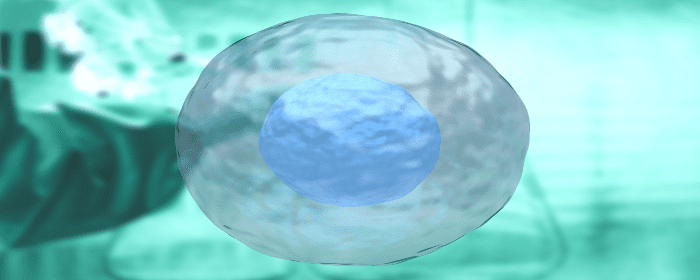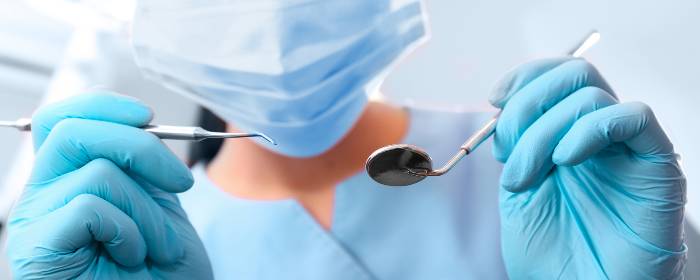
by admin | Jan 10, 2020 | Chronic Pain, Mesenchymal Stem Cells, Stem Cell Research
Chronic pain, that is, pain lasting for more than 12 weeks, is extremely common. As many as 1 in 3 Americans struggle with chronic pain, making it perhaps the most common physical condition that afflicts humans. Chronic pain is a source of significant suffering; it makes daily tasks more difficult, limits people’s ability to do the things they enjoy, and greatly diminishes the quality of life.
Perhaps the most frustrating aspect of chronic pain is that
there are usually no good treatments. Because the pain is chronic, patients who
try to treat chronic pain with medications must take drugs every day.
Acetaminophen and non-steroidal anti-inflammatories (NSAIDs) like ibuprofen can
help take away some suffering, but they are usually only partially effective.
Opioids are stronger, of course, but have such a high risk of causing
dependence and addiction that few doctors will prescribe for chronic non-cancer
pain. Physical therapy helps some, but not most people. Surgery may be able to
treat people with certain types of chronic musculoskeletal
pain; however, orthopedic surgery is a major ordeal with no guarantees of
success. Consequently, most people with chronic pain are left with very few
treatment options.
Perhaps this lack of chronic pain treatment options is what
makes recent stem cell research in chronic pain treatment so exciting.
Researchers are learning that mesenchymal
stem cells appear to be able to treat people with chronic pain. For
example, in a study of patients with low back pain who received treatment autologous
stem cells (their own stem cell populations purified, expanded, and
re-injected in their bodies), their pain and disability
decreased to the same levels as people who underwent major orthopedic
surgery (spinal fusion or total disc replacement). Another lab in Japan showed similar results.
The same benefit may occur in knee arthritis (osteoarthritis),
as well. Researchers showed that autologous stem cells were able to increase
the size of the knee
meniscus cartilage in a patient with severe knee arthritis. It should be
noted that damaged knee meniscus cartilage is one of the main sources of
chronic pain in knee osteoarthritis.
Of course, the number of patients treated in these studies is relatively small. Larger studies will be required to confirm that mesenchymal stem cells can treat chronic pain. However, these results are intriguing, since a staggering number of studies show autologous stem cell treatment to be safe. Indeed, mesenchymal stem cell treatment is now widely available in clinics and medical practices.
Reference: Waterman R. et al. (2011). Treating Chronic Pain with Mesenchymal Stem Cells: A Therapeutic Approach Worthy of Continued Investigation. Journal of Stem Cell Research & Therapy. 2011, S2 DOI: 10.4172/2157-7633.S2-001.

by admin | Dec 18, 2019 | ALS, Exosomes, Mesenchymal Stem Cells, Stem Cell Research, Stem Cell Therapy
Amyotrophic lateral sclerosis or ALS is a devastating, progressive neurological disease. While the precise cause is unknown, ALS does destroy nerve cells in the spinal cord, which causes several debilitating symptoms. Often the first symptom of ALS is weakness in the hands or arms that is usually more pronounced on one side of the body. As more spinal cord nerve cells become dysfunctional and die, patients with ALS become weaker, their movements grow slower, and their muscles begin to atrophy (i.e. break down). At the same time, some muscles in the limbs become spastic, which means they are constantly in a contracted state. In later stages of ALS, patients have difficulty swallowing and breathing. Mesenchymal Stem Cell Treatment for ALS is a unique and new option.
The only drug to have any known survival benefit in ALS is riluzole. Patients who take riluzole live longer than those who do not; however, the drug does not improve function or meaningfully reduce symptoms. The only other approved ALS treatment, edaravone, may slow the rate at which ALS gets worse. However, neither of these drugs is a cure—far from it, in fact. Indeed, doctors and patients are left with virtually no effective treatment options for ALS.
Because ALS is caused by the destruction of nerve cells in the spinal cord, the regenerative properties of stem cells may offer a solution. The hypothesis is that stem cells—and exosomes collected from stem cells—can help protect, preserve, or even regenerate cells that are affected by ALS.
A flurry of research has been published over the last decade documenting the safety and possible effectiveness of mesenchymal stem cells for the treatment of ALS. In 2009, Deda et al. showed bone marrow stem cells injected into the spinal area were safe in patients with ALS, even showing that some patients had improvements in neuromuscular testing. The research groups of Karussis, Mazzini, Blanquer, and Baek showed similar safety results. Martinez et al. showed that stem cells derived from bone marrow could improve survival in patients with ALS. Rushkevich et al. showed that stem cell infusion improved the quality of life in patients with ALS.
While more work is clearly needed to determine the full effectiveness of stem cell treatment for ALS, the number of researchers working on this topic and the number of successful studies published in this area are reasons for hope. These clinical studies show that stem cell treatment for ALS is clearly safe and feasible. What is needed are larger clinical trials that specifically focus on the effectiveness of treatment, both in the near- and long-term.
Reference: Roberta Bonafede and Raffaella Mariotti. (2017). Stem cell mobilizers: ALS Pathogenesis and Therapeutic Approaches: The Role of Mesenchymal Stem Cells and Extracellular Vesicles. Frontiers in Cellular Neuroscience. 2017; 11:80.

by admin | Aug 29, 2019 | Age Management, Mesenchymal Stem Cells, Stem Cell Therapy
Cognitive aging describes the changes to our ability to think, remember, and process information that occurs as we age. Cognitive aging begins in adulthood and progresses—if not accelerates—in old age. Over time, the speed at which we process information in the brain slows down, our ability to pay and maintain attention decreases, and we have a harder time making and recalling new memories. While some view cognitive aging as normal because it occurs in all of us, others acknowledge that cognitive aging is something that interferes with a person’s ability to function and diminishes the quality of life.
Currently, there are very few things that can slow cognitive aging and essentially nothing that can reverse it. Physical exercise, mental activity, and a healthful diet can modestly preserve cognitive function as we age. However, once aging occurs in the brain, there is nothing that we can do—currently—to change it.
Some innovative scientists are trying to change that, however. They are focusing on the changes in the brain that take place during aging and using stem cells to reverse that process.
A group of neuroscientists focused their efforts on memory and on the hippocampus, which is the main region of the brain that is responsible for memory. Researchers collected clinical-grade, mesenchymal stem cells taken from human umbilical cords and infused them into aging mice. Aging mice received stem cell treatment once every two weeks for several months.
After three months of treatment with umbilical cord-derived mesenchymal stem cells, mice showed significant improvement in learning and memory tests. Treated mice also had a remarkably improved function in the hippocampus. Surprisingly, stem cell treatment also created new brain cells (i.e. neurogenesis). Indeed, stem cell transplantation in aging mice actually reversed changes in the brain associated with cognitive aging.
These results were conducted in mice and not in humans, however, this research offers a strong foundation for conducting clinical human studies. If these improvements in memory and brain health could be shown in humans, it would be a groundbreaking study. Even in its current form, this research is an exciting breakthrough for the fields of stem cell medicine, neuroscience, and the neurobiology of cognitive aging. It suggests that mesenchymal stem cells may one day be able to reverse cognitive aging.
Reference: Cao N. et al. (2017). Clinical-grade human umbilical cord-derived mesenchymal stem cells reverse cognitive aging via improving synaptic plasticity and endogenous neurogenesis. 2017 Aug 10;8(8):e2996.

by admin | Jul 29, 2019 | Exosomes, Mesenchymal Stem Cells
Periodontal disease, better known as gum disease, is very common. About half of all adults have chronic gum disease, and as many as 15% had severe periodontal disease. In periodontal disease, the gums become red and inflamed. The tissues that connect the tooth to the bone, such as the periodontal ligament, are damaged or destroyed. Chronic periodontal disease can even invade and destroy jaw bone. Making matters worse, as the gums recede, they can collect bacteria in spaces called periodontal pockets. Over time, these periodontal pockets can become dental abscesses. As the gums become more and more diseased, the affected tooth or teeth may fall out.
The treatment for periodontal disease varies depending on its severity. Good oral hygiene including regular brushing and flossing can reverse mild periodontitis. A dentist can deeply clean, probe and disrupt periodontal pockets. In more severe cases, topical antiseptics or oral antibiotics may be required. Less often, a dental surgeon must remove diseased areas of gum and bone.
Periodontitis usually chronic and causes significant ongoing inflammation. Thus, the gums take a long time to heal. In many cases, periodontal disease can be difficult to treat.
Fortunately, dental researchers have been exploring ways to use mesenchymal stem cells to help the healing process. More specifically, they have been using the exosomes released by mesenchymal stem cells. Exosomes are small packets of proteins, RNA, and other molecules that help promote growth and tissue regeneration. Since exosomes are not cells, they are much easier to collect, store, transport, and administer to patients. Most importantly, exosomes appear to contain all of the things that make stem cells so powerful in regenerative medicine.
In a 2019 study, Dr. Chew and colleagues used exosomes collected from mesenchymal stem cells to treat rats with periodontal disease. The researchers noticed that animals treated with exosomes healed much faster than untreated animals. Exosomes taken from mesenchymal stem cells promoted periodontal tissue regeneration helped grow new bone and regrew periodontal ligaments. The researchers also found that exosomes were able to recruit new cells to replace the damaged ones.
This scientific research is an exciting breakthrough in the fields of dentistry and periodontics. Chew and co-authors have shown that mesenchymal stem cell exosomes could enhance periodontal tissue regeneration without any adverse effects. The scientists go on to state that these findings will serve as the basis for future “cell-free” exosome treatments for periodontal disease. This is certainly good news for the more than 150 million Americans with periodontitis.
Reference: Chew, JRJ. et al. (2019). Mesenchymal stem cell exosomes enhance periodontal ligament cell functions and promote periodontal regeneration. Acta Biomaterialia. 2019 Apr 15;89:252-264.

by admin | Jul 25, 2019 | Age Management, Mesenchymal Stem Cells, Stem Cell Research
Aging skin goes through a number of predictable changes. Skin loses collagen and other proteins as it ages, making the skin appear dull, saggy, discolored, and wrinkly. Many of these changes are due to the sun, as it bombards the skin with harmful ultraviolet (UV) radiation. When the skin is exposed to the sun’s UV radiation, it produces reactive oxygen species and leads to oxidative stress. The result is of these oxygen radicals is thickened, damaged, photo-aged skin. Unfortunately, the cells that could help replenish and rejuvenate the skin—epidermal progenitor cells—may also be damaged by UV radiation. Indeed, as we age, we produce fewer and fewer of these helpful cells. Thus, the skin is left defenseless.
Researchers are looking for ways to fight back against the ravaging effects of age and sun damage on human skin. Some have reasoned that if the skin lacks epidermal progenitor cells during aging, why not try to protect or restore those cells? Consequently, some scientists have studied the effects of injecting stem cells directly into the skin (with promising results). However, many patients would like to have the same skin rejuvenation effect without painful injections. Scientists are learning that the beneficial effects of stem cells come mostly from the things that they secrete rather than the stem cells themselves. This means that doctors could potentially take the fluid that a stem cell secretes and use that liquid as a treatment, rather than injecting whole stem cells into a patient’s skin. Indeed, this is the approach that researchers recently pursued and published.
Researchers began their research by collecting epidermal progenitor cells taken from mesenchymal stem cells. These epidermal progenitor cells are the stem cells that give rise to skin. Epidermal progenitor cells also produce substances that help support natural, youthful skin growth and development. The researchers allowed these epidermal progenitor cells to produce and release substances into the surrounding solution. They then collected that solution and used it in subsequent experiments.
In the first set of experiments, researchers showed that the cell-free fluid derived from stem cells could protect skin cells from oxidative stress caused by hydrogen peroxide. Indeed, something (or things) released by the stem cells prevented skin cells from undergoing the types of changes they would endure during sun damage. In fact, the treatment apparently caused the skin to increase its own natural defenses by producing more antioxidant enzymes and increasing the creation of new collagen.
Encouraged by these results, the researchers then conducted a clinical study of 25 people between the ages of 29 and 69. They took the same cell-free fluid derived from stem cells and applied it topically to the skin of volunteers twice a day for four weeks. The treatment significantly reduced skin depressions and wrinkles. Treatment also noticeably improved the texture of the skin.
Given the apparent safety and efficacy of this cell-free treatment, researchers are likely to continue to test these treatments in larger clinical trials. The results are exciting because they offer the possibility of a topical stem cell treatment without directly injecting stem cells themselves. Indeed, patients may someday be able to use cell-free stem cell skin rejuvenation treatments at home.
Reference: Sohn, SJ. et al. (2018). Anti-aging Properties of Conditioned Media of Epidermal Progenitor Cells Derived from Mesenchymal Stem Cells. Dermatology and Therapy. 2018 Jun;8(2):229-244.






 St. Petersburg, Florida
St. Petersburg, Florida
